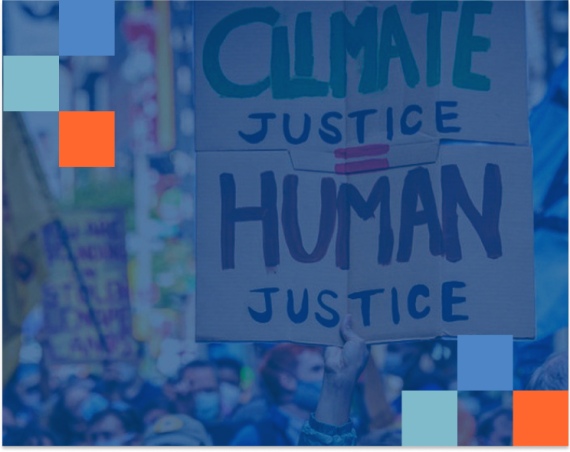Wildfires. Drought. Hurricanes. Floods. These days it seems like everywhere you look, some part of the world is experiencing a natural disaster. While some climate changes are natural, today’s rising temperatures and abnormal weather patterns are a direct result of human activities. While organizations, countries, and individuals are all taking steps to mitigate the burgeoning crisis, according to the United Nations we are not on track to meet the target set by the Paris Agreement to prevent the globe’s temperature exceeding 1.5°C above pre-industrial levels. Where do we go from here? Enter climate action plans.
What is a climate action plan?
A climate action plan (CAP) is a strategic document that outlines a collection of measures and policies to reduce greenhouse gas emissions and actively address climate challenges. It defines reduction goals based on local priorities and develops a framework with tactical activities to help achieve those goals. Including everything from renewable energy strategies like creating solar grids to stormwater management to preventative measures these plans can be comprehensive and also aim to address inequalities in the way that the effects of climate change are being distributed. As we work towards achieving net zero emissions across the globe, these plans are crucial to a local government’s strategy on tackling climate change.
Incorporating community engagement into the process, particularly through an online digital platform, will help you bring all key collaborators of your city – from residents to climate activist groups to government stakeholders – together in the process to help more easily identify key priorities and create reasonable action plans that everyone can get behind.
Tackling climate change with inclusive climate action plans on the local level
In order to preserve our planet and natural resources, policymakers and local governments need to make a concerted effort to develop and enact comprehensive climate action plans at the local level. According to the Center for Climate and Energy Solutions, 34 out of 50 states in the United States have or are revising/developing state-wide climate action plans. Now, counties and cities are also taking action into their own hands. The individual characteristics of each local government’s economy, resources, community attributes and political structure provide different opportunities and needs so it’s important to address climate change at every level.
Additionally, community engagement in climate action plans can help recognize and fix historical climate inequalities in local communities. As you look forward to the future of your climate action plans it’s crucial to recognize and rectify this inequality through inclusive community engagement. By rolling out an online community engagement platform while developing climate action plans, you can access traditionally unheard voices and pinpoint these inequalities and gaps in climate planning.
It’s going to take significant reform in individual and collective actions to build climate resilience and lessen the long term impacts of climate change. Through community engagement, communities and local governments can unite to co-create climate action plans that are sustainable, actionable, and effective.
What type of community engagement is best for creating climate action plans?
With community engagement, there is no one size fits all approach. Understanding local priorities and communication styles is essential to developing an engagement strategy that matches the needs of your community, especially with so much at stake on a topic as complex as climate change.
Depending on your community’s needs and existing culture of engagement, certain approaches might be more successful than others. There are three core approaches you can take when determining your CAP’s priorities and activities.
- Outreach: With so much information, as well as false information, out there about climate change, it can be overwhelming to know who to trust or where to look when trying to find the facts. People want to know how climate change is going to directly affect their lives and neighborhoods, and are more likely to engage if they resonate with the challenges and impacts. When making your local climate action plans, use community engagement as an educational opportunity to distribute factual information and encourage commitment to the cause of reducing greenhouse gas emissions. From sharing how climate change is affecting your community directly (e.g. in the form of extreme weather patterns, economic challenges, etc.) to presenting broader initiatives and information on the crisis as a whole, community outreach as you craft your CAP can position you as a climate thought leader for your residents to build trust and engagement.
- Consultation: Knowing how to address climate change and prioritize focus areas within your community can be a significant challenge. By using an online engagement platform, you can deploy consultative tools such as surveys and polls that will allow you to present proposed environmental policies, programs, and methods for emission reductions and give residents the opportunity to provide feedback. Whether it’s your comprehensive climate action plan or on specific topics within a CAP such as sustainable transportation methods and waste management, consultative feedback is a great way to do quick community check-ins throughout your process. As a relatively low ‘cost of entry’ for residents, consultative methods are a very efficient and data-driven approach when crafting CAPs.
- Deliberation: Through online workshops and proposal submissions, you can also provide a platform for your community to directly co-create CAPs by giving them the floor (digitally). By giving residents the space to put their own recommendations and actions up for discussion, you will gather new and unheard perspectives to implement into your new plans and will also be able to address gaps and inequalities in existing plans. This method opens up the opportunity to harness and consolidate the power of the existing loud voices in your community in a moderated and productive environment. By engaging with these voices directly – whether they be from local climate organizations or are just very engaged constituents – you can empower key stakeholders to feel heard and build long-term support. While this approach can be more daunting for residents and may require more resources on your end, this level of engaged buy-in is essential in order for the actions and activities in a climate action plan to permeate your entire community.
Make sure to meet your community where they are when considering which approach to use to maximize the return on engagement. The great news? All three of these approaches are possible within an all-in-one online community engagement platform.
In order to make the drastic changes required to protect our planet, communities need to work together to develop climate action plans that will inspire comprehensive behavior changes across the board. We are all working towards the same goal to protect our planet, and community engagement in climate action plans will streamline the process and improve environmental outcomes for all.






